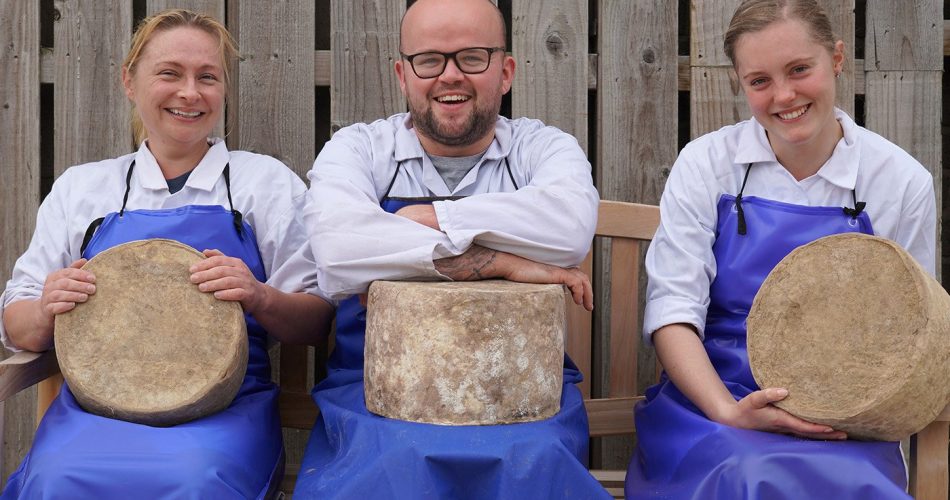Fulfill the Cheese Makers Melbourne Trusts: The Heritage of Floridia Cheese Thomastown
Fulfill the Cheese Makers Melbourne Trusts: The Heritage of Floridia Cheese Thomastown
Blog Article
Unlocking the Tricks of Artisanal Cheese Making: A Step-by-Step DIY Overview
In the world of cooking workmanship, artisanal cheese making stands as a testament to the fragile balance between custom and development. As we embark on this trip to debunk the art of creating splendid cheeses, we are encountered with a tapestry of secrets and abilities waiting to be deciphered.
Picking the Right Milk
When starting the trip of artisanal cheese production, the option of milk plays a crucial duty in determining the top quality and qualities of the final item. The type of milk chosen affects the taste, texture, and in general profile of the cheese. Raw milk, straight from the animal, is favored by several artisanal cheesemakers as a result of its unique mix of enzymes, bacteria, and flavor compounds. Using raw milk comes with risks and regulations, making sterilized milk a safer alternative for newbies.
In addition, the source of the milk, whether from cows, goats, sheep, or buffalo, contributes unique tastes and characteristics to the cheese. Each type of milk brings its very own subtleties, permitting for a broad variety of cheese ranges to be crafted based on the picked milk.
Culturing and Coagulating
To initiate the cheese-making process, the important actions of culturing and coagulating must be thoroughly carried out to change milk into curds and whey. Culturing includes presenting advantageous germs to the milk, which then starts the fermentation procedure. These bacteria convert lactose (milk sugar) into lactic acid, producing the acidic atmosphere needed for coagulation. The kind of culture utilized can dramatically influence the taste, structure, and ripening of the final cheese product.

The timing and temperature level control throughout culturing and coagulation are vital elements that affect the final end result of the cheese. Proper implementation of these steps is crucial to make sure the desired appearance, flavor, and uniformity of the artisanal cheese being created.
Draining Pipes and Pressing Curds
After the milk healthy proteins have coagulated and the curds have actually been cut to launch whey, the next vital step in artisanal cheese making entails draining and pushing the curds to achieve the preferred texture and consistency of the last cheese product. Draining pipes is the procedure of separating the curds from the whey. This can be done by moving the curds into a cheesecloth-lined bowl-shaped sieve or mold and mildew and enabling the whey to drain pipes off naturally. The time for draining pipes can vary depending on the type of cheese being made and the preferred moisture content.
Once the curds have adequately drained pipes, the following step is pressing. Pressing assists eliminate any staying whey and compacts the curds to develop a strong cheese wheel. Pushing can be done using specialized cheese presses that apply regular and mild stress over a time period. The duration and pressure used throughout pushing will certainly influence the final structure of celebrity, from velvety and soft additional hints to tough and firm. Proper draining pipes and pushing are crucial steps that significantly impact the quality and attributes of the artisanal cheese being generated.
Aging and Flavor Techniques
Executing meticulous aging and flavoring strategies is crucial in boosting the deepness and complexity of artisanal cheeses, elevating their taste accounts to exquisite degrees of improvement and sophistication. Aging plays a vital function in developing the unique flavors and textures that identify artisanal cheeses. Throughout the aging process, cheeses are stored in carefully regulated atmospheres where elements such as temperature level, air flow, and humidity are controlled to encourage the development of useful molds and germs. This controlled setting allows celebrity to develop slowly, establishing complex fragrances and abundant flavors.
Flavoring methods likewise contribute significantly to the final taste of artisanal cheeses. Cheesemakers might select to present additional flavors by integrating active ingredients such as herbs, spices, or also fruits right into celebrity during the production process. Furthermore, some cheeses are cleaned or massaged with numerous liquids, such as brine or alcohol, to enhance their appearances and tastes.
Covering and Storing Cheeses

Verdict
In final thought, understanding the art of artisanal cheese making entails meticulously choosing the appropriate milk, complying with exact culturing and coagulating procedures, draining and pressing curds efficiently, and using different aging and flavor strategies. Bear in mind to cover and store your cheeses correctly to guarantee ideal flavor and structure advancement.
Each kind of milk brings its very own subtleties, enabling for a large array of cheese selections to be crafted based on the picked milk.After the milk healthy proteins have actually coagulated and the curds have actually been reduced to launch whey, the following essential step in artisanal cheese making includes draining and pressing the curds to accomplish the preferred structure and consistency of the final cheese product. Many cheeses must be wrapped in wax paper or cheese paper to enable them to take a breath while protecting them from drying out. For cheeses that need to continue aging, such as bloomy rinds or washed rinds, ensure they are kept in a trendy environment like a cheese cave or a refrigerator set to the suitable temperature level. By paying interest to the wrapping and storage of artisanal cheeses, cheese makers and lovers can preserve the integrity of these specials and fully appreciate their intricate tastes.
Report this page